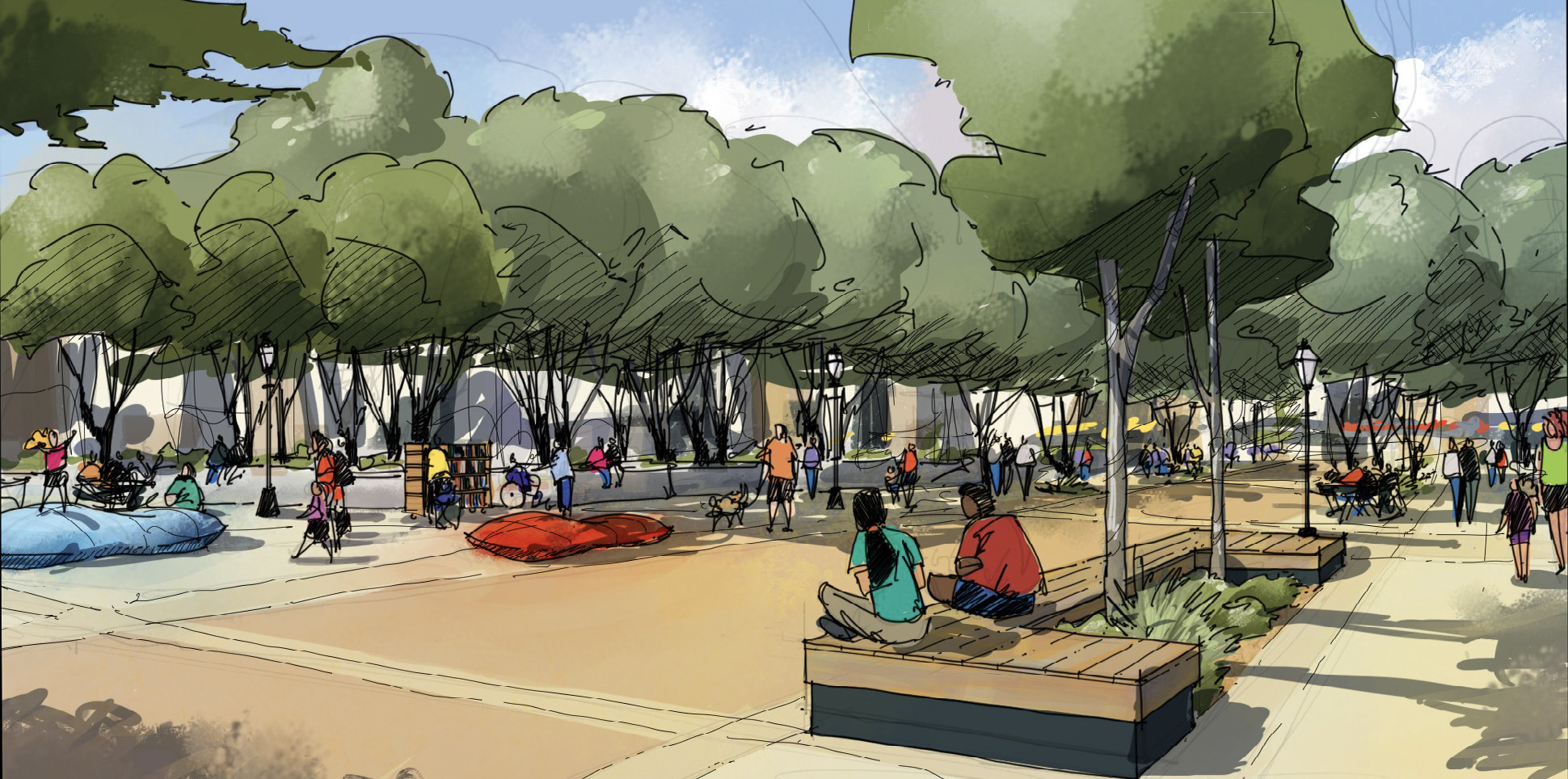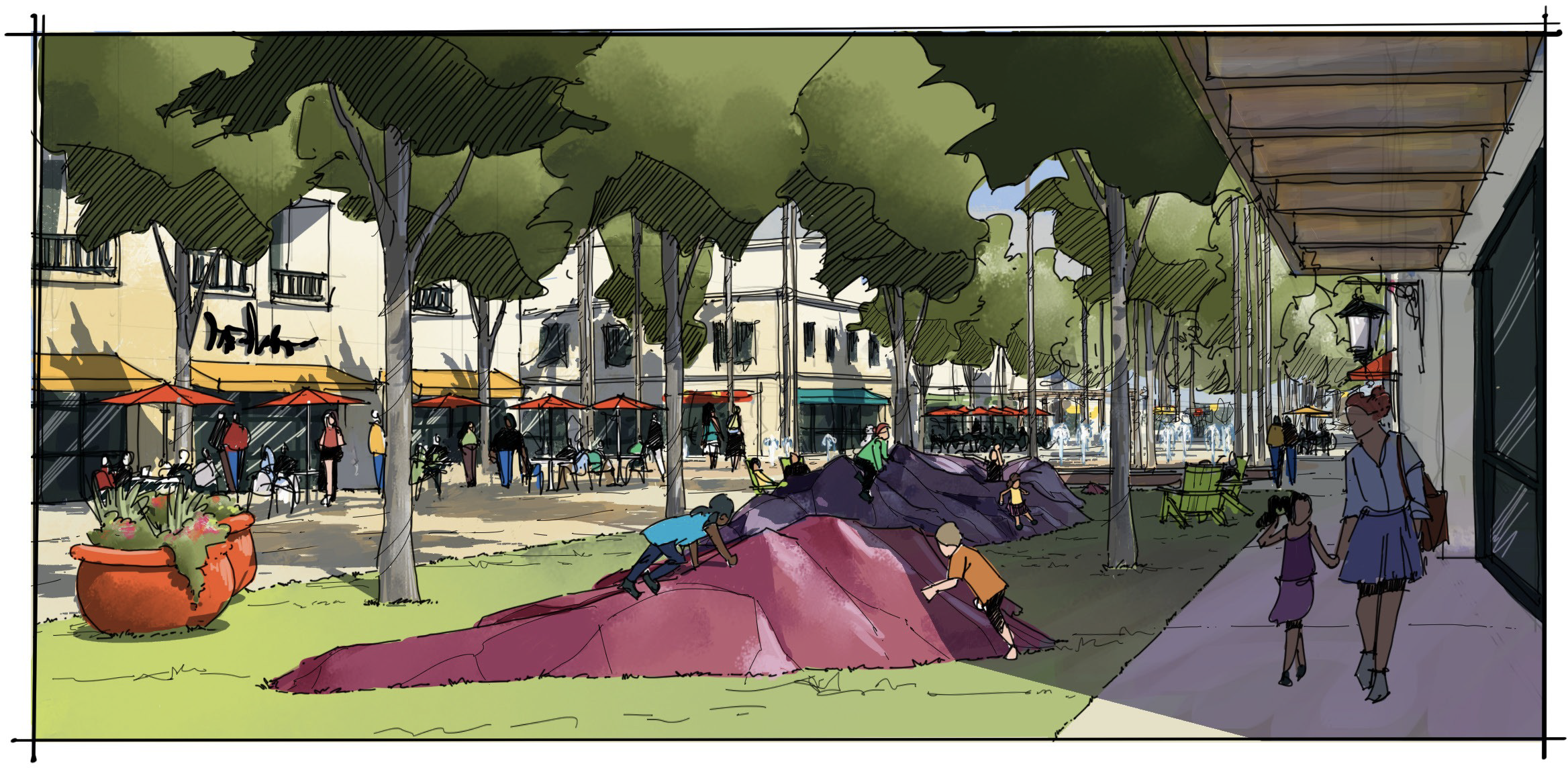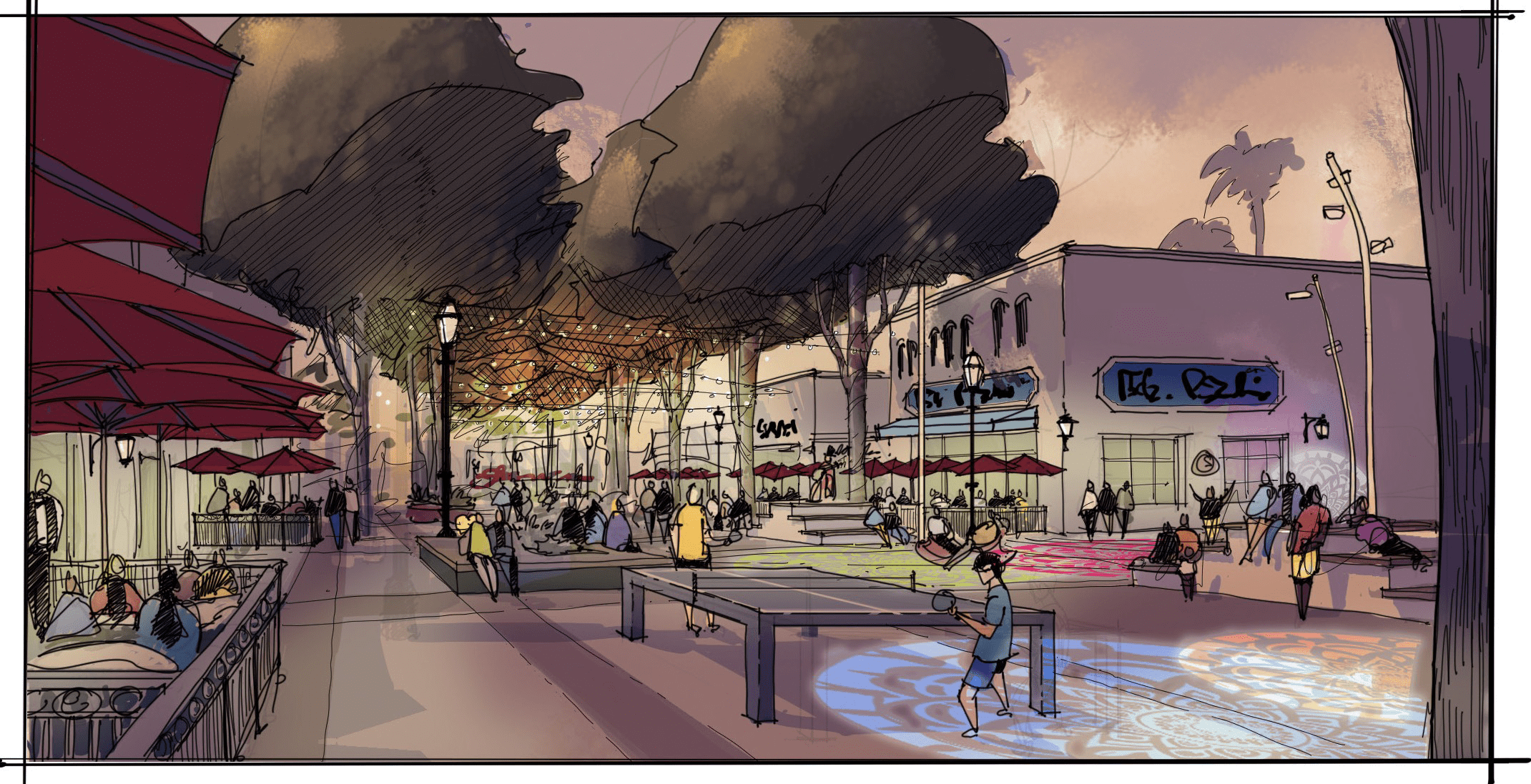Big Ideas to Fix Downtown Santa Barbara, Both Now and in the Long-Term
City Officials Talk Interim Fixes, While State Street Master Plan Reveals What Future May Look Like for Downtown

It’s been all about State Street at City Hall recently. In the past week, the public got a look at the $800,000 consulting firm’s big State Street Master Plan, while the City Council took a look at what could be done immediately to address problems with the downtown promenade.
During last week’s State Street Advisory Committee meeting, city planners and representatives from MIG, Inc. presented the latest “Create State” vision for downtown, which State Street Master Planner Tess Harris said was the culmination of previous input from the committee and feedback from the community during public comments.
State Street’s Big Future
The main takeaway from the Create State concept was the development team’s plan to break State Street into three distinct districts: the Arts District (from Sola to Carrillo), the Civic Core (Carrillo to Ortega, including De la Guerra Plaza and Paseo Nuevo), and Old Town (stretching from Ortega all the way to the Highway 101 undercrossing, connecting downtown and the Funk Zone/waterfront).
The idea for the three districts is to create a more immersive experience for each section of the downtown area, attracting people to State Street with a “people-centric” design that was more along the lines of an urban neighborhood than a strip of disconnected businesses.
Illustrated renderings for the three districts show a lively and pedestrian-heavy State Street — with Ping-Pong tables, interactive games, and plenty of public seating — though planners said that all concepts include a 20-24 foot corridor that could support “most mobility options” for vehicle access and shuttle service.

Planners also floated a “what if” scenario for the city, proposing that the City Council rethink its patio seating policies and consider adapting the regulations to expand parklets into the street. In the renderings, parklets are doubled from six feet wide to 12, and pushed out of walkways into the center of the street.
The concept is still in its very early stages, and several committee members and city residents who spoke up during the meeting supported the overall idea of the three districts, though there was agreement that the design would need to be tweaked to match Santa Barbara’s traditional aesthetics and the community’s priorities.
The committee still has a long way to go before getting to a finalized design, with meetings over the next few months scheduled to discuss transportation, stormwater and utilities, implementing items based on community input, and financing the project. If everything goes according to plan, the city council can start approving the final design sometime in 2024.
What Can Be Done Now?
In the meantime, the City Council is starting to address what changes can be made now to make State Street a more welcoming and safer place for people to navigate while the larger plan is still in the works.
On Tuesday, the council considered several recommendations based on the work done by the now-dissolved State Street Interim Operations Ad-Hoc Committee. The eight recommendations could be implemented “immediately and without much delay,” according to Councilmember Kristen Sneddon, who was one of three members of the committee.
But as it turned out, as is common with decisions regarding State Street, some of the changes would be a lot tougher to put in place than the committee members would have hoped.
Reducing the speed limit for vehicles on downtown cross-streets and bicycles on State Street to 15 miles per hour, for example, would require engineering and traffic studies for every street, and even then, the result could be higher speed limits, Downtown Manager Brian Bosse explained, as the studies decide only what’s best for traffic flow. The city could decide to designate State Street itself as a “business corridor,” and reduce the bicycle speed limit to 20 mph, though this would do nothing to address the problem of enforcement, which Councilmember Alejandra Gutierrez pointed out as the real issue with bicyclists riding too fast.

“How realistic is this knowing we have limited resources?” Gutierrez asked.
Instead, the council unanimously agreed that the city could immediately paint designated bike lanes along the eight blocks of the State Street Promenade, with the lanes routed to either side of the street. The bike lanes would be preferable to creating two full “pedestrian only” blocks — as suggested in another recommendation — and could be done without much of a dent on the city budget.
Other recommendations would take a lot more consideration, like closing off the street for one-way drop-offs on nights with shows at The Granada Theatre or implementing a microtransit shuttle service up and down State Street.
It would be difficult to work out logistics to open a street for drop-offs at the Granada, Bosse said, though the city could create a one-way street on that block that would be open 24/7. But this change would force the businesses on the block to remove their parklets, and the council agreed that it would be better to have the theater explore alternate drop-offs in the back of the building.
A microtransit service could cost as much as $500,000, Bosse said, if the city were to pursue a system similar to San Diego’s Pacific Beach shuttle with four vehicles running 10-12 hours a day. Despite the costs, the City Council unanimously agreed that the service was needed and directed staff to come back with a few options for a smaller-scale transportation method, including potential collaborations with MTD or Easy Lift Transportation.
The council will continue the interim State Street discussions each month during regular meetings. Next month, the city will likely discuss how to more formally involve the Historic Landmarks Commission and Access Advisory Committee in aesthetic and accessibility design decisions for State Street.





You must be logged in to post a comment.